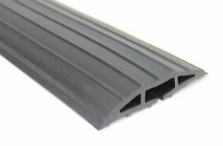Installing A Garage Door Seal
- Comments Off on Installing A Garage Door Seal
- Service
The garage door is made up of many layers. The bottom of your Garage Door Seal has several varieties of seals. Top and side seal retainers on a garage door perform the same function as those found on the doors of your home. Like top and side retainers, they come in different shapes and sizes. Depending on their shape and size, you can either slide in (Vinyl or rubber) flexible insert (T-shaped or straight) or heavy duty (solidly constructed).

The side and top seal operate almost identically, and both serve to prevent the entry of rain, snow, sleet, etc. respectively. A slight difference exists in how they accomplish this task: The top-sealed garage door weather seal creates a small” Gap” between the exterior and interior tracks, which is somewhat like the “air gap” created by the edge of an automobile tire on a race track. This helps to prevent snow and rain from entering the garage door.
Bottom seals are usually referred to as solid bottom, because they prevent the boot of a vehicle from moving when the door is closed. However, not all solid bottom garage doors are created equal. Some use a rubber or plastic bottom that is permanently attached to the garage frame. Other bottom seals require an insert that is pushed into the steel framing at the bottom of your garage. Regardless of how the seal is installed, however, these rubber or plastic seals provide very effective snow and rain protection.
Installing a seal involves nailing small rubber or plastic seals to the underside of your garage’s track. (Care should be taken to avoid nailing into the track itself, as this will defeat the purpose.) Once the nails have been placed, they should be secure and tightly secured. The easiest way to secure the nails is to place them right under the tack strip, pressing the strip down with the palm of your hand. Make sure you nail down each nail carefully and securely, and that each nail has a secure head so it doesn’t move while you’re working.
Once the weather stripping is installed, it’s time to install the weather seal. This requires a sharpened metal straighter (at least 6 inches in width), a drill bit to match the size of your garage’s threshold, a sheet metal tube (at least three inches in width), and weather stripping. The weather stripping should fit snugly against the bottom of your door, with the corners cut along the threshold. The tube should be connected to the fitting at the top of the threshold, with the two points of contact providing a firm connection.
Now that the seals are in place and secured, the next step is to install the gasket strip. The gasket must be accurately positioned inside the door threshold, with the flat end facing the open doorway. Use a measuring tape to position the gasket strip inside the bottom of your garage. Mark the location on the gasket strip with a pencil so you can easily remove it later. When installing gaskets, it’s a good idea to make sure the gasket faces the correct way – which can be helpful for future repairs.




